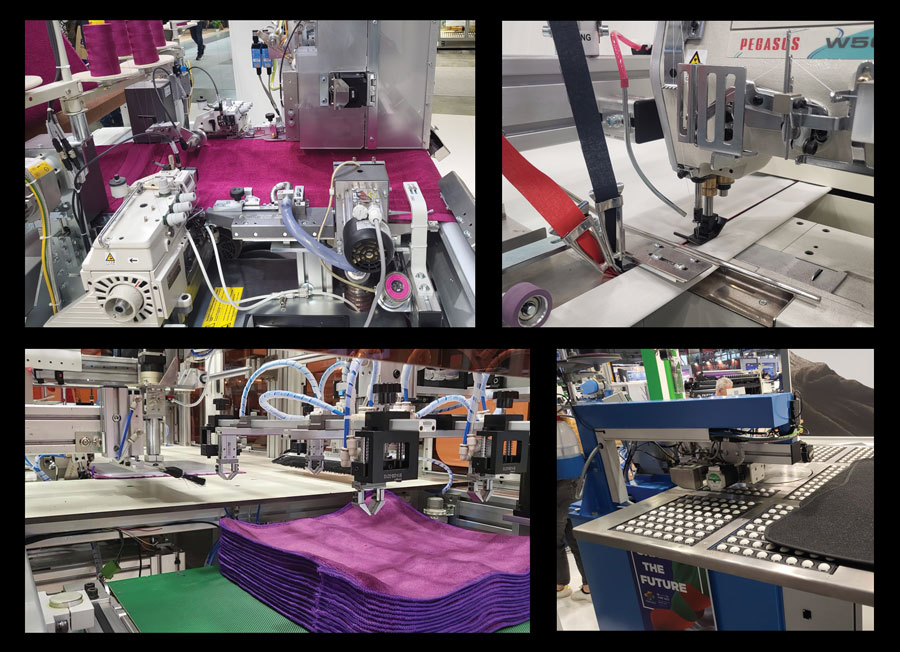
Gildan Agrees to Buy Underwear Maker Hanesbrands for $2.2 Billion
The Last Thread: How a $2.2 Billion Bet Could Reweave America's Forgotten Fabric Empire
WINSTON-SALEM, North Carolina — In the shadow of abandoned textile mills that once dressed a nation, Wednesday's announcement of Gildan Activewear's $2.2 billion acquisition of Hanesbrands carries the weight of an industry's reckoning. Here, where generations of workers stitched together the intimate foundation of American wardrobes, the deal represents more than corporate consolidation—it signals the final transformation of a manufacturing heritage that globalization has rendered almost obsolete.

The acquisition, valuing Hanesbrands at $6 per share through a strategic blend of cash and equity, concludes a painful chapter for a company whose brands once commanded unquestioned loyalty across dresser drawers from coast to coast. For Gildan, this calculated gambit represents something more audacious: a belief that manufacturing excellence can resurrect brands that marketing budgets alone could not save.
When Heritage Collides with Hard Economics
The mathematics of modern apparel retail are unforgiving. In boardrooms across the industry, executives confront a brutal truth: brand recognition without operational efficiency has become an unsustainable luxury. Hanesbrands, despite commanding household recognition through iconic labels like Hanes, Maidenform, and Playtex, has spent recent years hemorrhaging market share to nimbler competitors and private-label alternatives that prioritize price over pedigree.

"This wasn't just a corporate transaction—it was inevitable," observed one industry veteran who has watched decades of consolidation reshape the basics market. "The consumers who once bought Hanes because their mothers did now comparison-shop on their smartphones. Loyalty became a liability when it wasn't backed by competitive economics."
The human cost of this transformation extends far beyond shareholder statements. In communities where textile manufacturing once provided middle-class stability, the erosion of domestic production has created economic voids that service sector jobs have struggled to fill. The consolidation of remaining operations under more efficient ownership structures represents both opportunity and disruption for the thousands of workers whose livelihoods depend on keeping America clothed in basics.
Table: Trends in U.S. Textile and Apparel Manufacturing Employment Decline (1995–2025)
| Year / Period | Estimated Employment | % Change vs. 1995 | Notable Drivers of Change |
|---|---|---|---|
| 1995 | ~1,000,000+ | N/A | Pre-globalization peak, large domestic factories |
| Late 1990s–2000s | Sharp decline | – | Trade agreements, offshoring, rising import competition |
| 2016 (apparel only) | ~120,000 | -85% (apparel sector) | Labor offshored, automation gains |
| 2021 | Mostly micro-factories | – | 76% of mills <10 employees |
| 2024 (total) | 270,700 (Textile & Apparel) | -73% (total vs. 1995) | Automation, globalization, limited post-COVID recovery |
The Vertical Integration Imperative
Gildan's strategy reflects a hard-learned lesson from globalization's winners and losers: success in commodity apparel requires control over every link in the production chain. The Canadian company's vertically integrated operations—spanning yarn production through garment completion across Caribbean and Central American facilities—represent a masterclass in supply chain efficiency that Hanesbrands, despite decades of trying, never achieved.
The projected $200 million in annual cost synergies within three years tells only part of this story. Behind those numbers lies a fundamental reimagining of how basic apparel reaches American consumers—consolidating fragmented operations into a streamlined system that can compete with both overseas manufacturers and domestic private-label programs.
"The survivors in this industry aren't the companies with the best marketing campaigns," explained a supply chain executive familiar with both organizations. "They're the ones who can deliver quality products at competitive prices while maintaining the service levels that retailers demand. Gildan has mastered that equation in ways that traditional branded companies never could."
Retail's Ruthless Metamorphosis
The acquisition unfolds against a backdrop of seismic shifts in American shopping behavior. Major retailers like Walmart and Target have systematically expanded private-label offerings, capturing price-conscious consumers who increasingly view underwear and basic apparel as undifferentiated commodities. This commoditization has compressed industry margins while elevating manufacturing efficiency from competitive advantage to survival requirement.
Simultaneously, direct-to-consumer brands leveraging social media marketing and algorithmic advertising have fragmented traditional distribution channels. Companies that once secured prosperity through prime department store placement now compete in ecosystems where supply chain responsiveness and digital visibility often matter more than brand heritage built over generations.
The combined entity emerging from this transaction will create a more formidable negotiating counterweight to retail consolidation, potentially stemming private-label encroachment through improved service levels and competitive pricing enabled by manufacturing synergies.
The Australia Gambit
Perhaps the most intriguing element of this corporate chess match involves Gildan's planned strategic review of Hanesbrands' Australian operations—a business representing approximately 20% of current earnings but carrying significant antitrust complexity. The potential divestiture of these assets could generate $750-900 million in proceeds while eliminating regulatory hurdles that might otherwise complicate integration.
Such a move would accelerate debt reduction while allowing management to focus integration efforts on North American and European markets where synergy potential appears greatest. For investors, this strategic flexibility represents a hedge against execution risk while preserving options for value optimization.
The Intimacy of Economics
What makes this transaction particularly compelling is its intersection with the most personal aspects of consumer behavior. Unlike fashion apparel subject to seasonal trends and aspirational purchasing, basic undergarments represent pure utility purchases where price, comfort, and availability typically trump brand considerations.
This dynamic has created market conditions where operational excellence matters more than marketing sophistication—a reality that favors manufacturers like Gildan who have prioritized supply chain efficiency over brand building. The acquisition effectively consolidates branded retail relationships with manufacturing capabilities that neither company could optimize independently.
Integration's Critical Path
The success of this combination will largely depend on execution during an integration phase expected to extend well into 2026. Consolidating manufacturing facilities while maintaining product quality and customer service presents operational challenges that have derailed numerous industry consolidations.

Historical precedent suggests particular risks in harmonizing production systems and distribution networks without disrupting customer relationships. The complexity of rationalizing overlapping product lines while preserving consumer loyalty requires both technical precision and cultural sensitivity that transcends traditional merger integration approaches.
Capital Allocation and Market Evolution
From an investment perspective, the transaction creates opportunities for patient capital willing to underwrite operational improvements over brand revitalization. The basics market may lack growth dynamism, but efficiently managed operations can generate stable cash flows resistant to economic volatility.
Industry analysts suggest the combined entity could achieve sustainable EBITDA margins exceeding 22%—well above historical Hanesbrands performance—if synergy targets materialize. This improvement trajectory, coupled with debt reduction from potential asset sales, could support meaningful shareholder returns despite limited revenue growth prospects.
Did you know? Hanesbrands’ historical EBITDA margins have typically ranged between 13–16% in normal years, dipping only during the pandemic, but the planned Gildan–Hanesbrands merger is expected to lift the combined company’s profitability dramatically—management projects a 20% adjusted EBITDA margin on a pro-forma basis, rising to 23% once $200 million in targeted cost synergies are fully realized, a jump of roughly 400–900 basis points over Hanesbrands’ past performance.
The broader industry implications extend beyond this single transaction. Additional consolidation appears likely as companies seek the operational scale necessary to compete with both international manufacturers and retail private labels. Market participants positioned with superior manufacturing capabilities and strong balance sheets may emerge as either acquisition targets or consolidators in this evolving landscape.
NOT INVESTMENT ADVICE